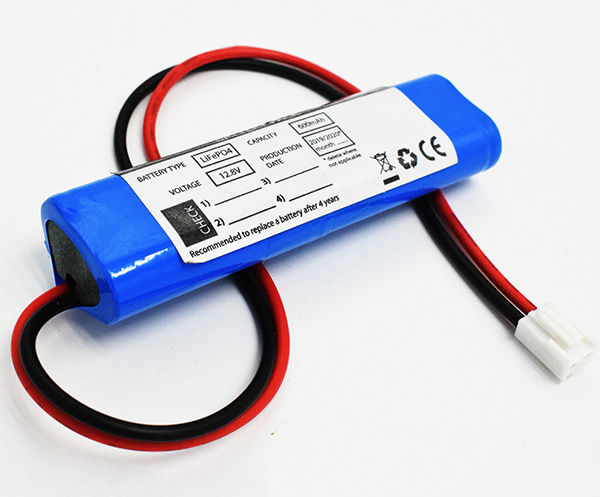Lithium iron phosphate is very cost effective as the power source in emergency lighting when compared with alternatives such as NiCd. This applies to its acquisition costs, running costs and maintenance costs.

Over 4+ years the acquisition costs of lithium iron phosphate (LFP) batteries for emergency lighting are lower than the cost of NiCd batteries. Compared on the basis of capacity (Ah), LFP batteries are more expensive than NiCd. However, because the performance of NiCd batteries declines relatively steeply through their life, more of them are required to deliver the expected 3 hours duration after 4 years use. Further, LFP batteries can be expected to last about twice as long as their NiCd equivalents, so over a period of 4 or more years the acquisition costs of LFP are lower than NiCd.
Lithium iron phosphate (LFP) batteries are the most economical batteries to run for emergency lighting. This is because the main alternative, NiCd batteries, have a high self-discharge rate (c. 20% per month) so have to be constantly charged in order to be ready in case of a power cut. In contrast, the much lower self-discharge rate for LFP means that the charger is only used in short bursts once in every one or two months.

 Ni-MH Battery C4700mAh 3.6V
Ni-MH Battery C4700mAh 3.6V Nickel Cadmium Nicd Battery Pack SC1800mAh 3.6V
Nickel Cadmium Nicd Battery Pack SC1800mAh 3.6V Ni-Cd Battery Pack D4000mAh 3.6V
Ni-Cd Battery Pack D4000mAh 3.6V Ni-Cd Battery Pack C2500mAh 3.6V
Ni-Cd Battery Pack C2500mAh 3.6V NICAD Battery Pack AA900mAh 3.6V
NICAD Battery Pack AA900mAh 3.6V LiFePO4 IFR18650 1600mAh 3.2V
LiFePO4 IFR18650 1600mAh 3.2V LiFePO4 IFR18650 1600mAh 6.4V
LiFePO4 IFR18650 1600mAh 6.4V Ni-MH Battery C4000mAh 3.6V
Ni-MH Battery C4000mAh 3.6V E-bike Battery 48V 10Ah JL-1
E-bike Battery 48V 10Ah JL-1 E-bike battery 48V 10Ah Qing Tian
E-bike battery 48V 10Ah Qing Tian